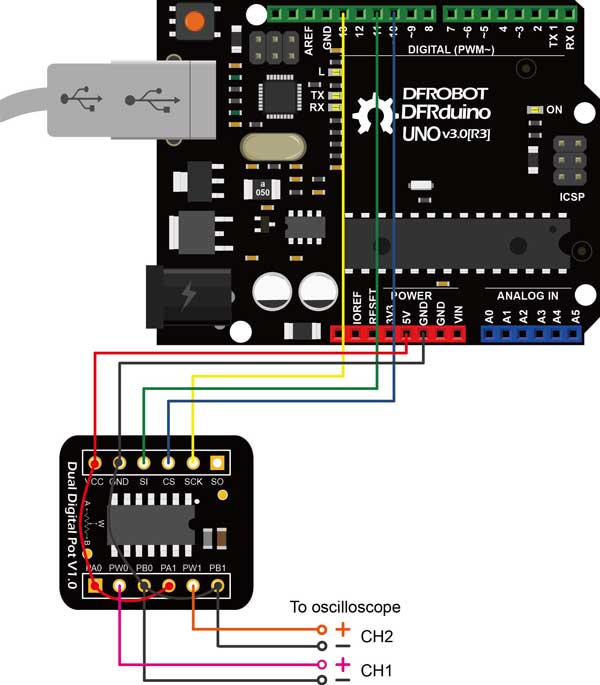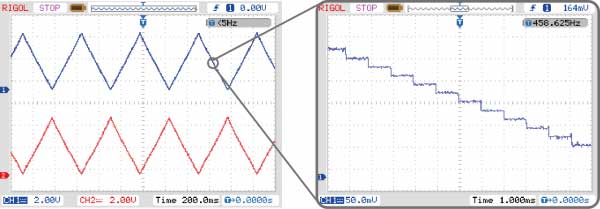
Fermion: MCP42100 Dual Digital Potentiometer - 100K (Breakout)
All prices are VAT included
Digital potentiometer is also called "Digital Pot" in short. It is a kind of mixed signal IC, which is able to dynamically change the internal resistors through MCU like Arduino. It can be applied to applications such as LED DC dimming, linear stable voltage source, oscillator, low pass filter or differential amplifier.
This breakout employs MCP42100 internally manufactured with two individual 100K digital pots. It features as small size and low power consumption. With our tutorial and sample code provided, you can quickly apply this module to your project. Compared to the traditional mechanical potentiometer, the digital pot features as flexible (program control), small size (ICs) and high reliability (without mechanical parts). It can replace the tradition one in many applications. Digital pot is usually used to change the sound volume in audio devices, such as smart loudspeaker, cell phone, and music player.
In addition, with a proper design op-amp circuit, the digital pot can also be applied to change some key parameters of the circuit dynamically, such as LED DC dimming (output current), linear stable voltage source (output voltage), oscillator ( frequency and amplitude), low pass filter (bandwidth) and differential amplifier (gain).This breakout employs MCP42100 internally manufactured with two individual 100K digital pots POT0 and POT1. Each pot has 256 taps with a resistor of 100KΩ. It supports wide voltage supply (DC 2.7V - 5.5V) compatible with MCU of 3.3V and 5V. The breakout features as small size (20.0mm*18.0mm) and reserves the SO pin for multiple breakouts being configured in daisy-chain connection. If you have an I/O shield in hand, this breakout can be easily connected to it with the attached 5 pin male to male cable.

Arduino Connection Diagram



